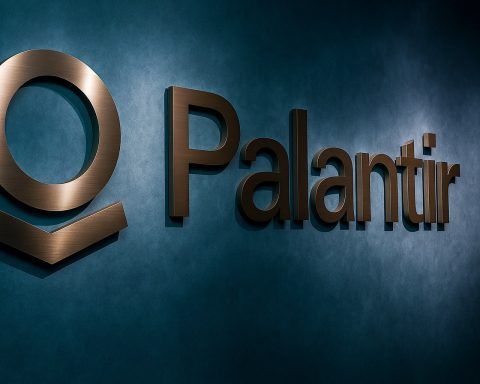- Ticker & Price: Lemonade Inc. (NYSE: LMND) trades in the high-$60s as of Nov. 5, 2025 [1], after a ~14–15% jump on the day. On Nov. 4 it closed at $58.66 [2]. Year‑to‑date the stock is up roughly 150%, from a low near $23.50 in late 2024 to a 52-week high around $63.48 [3] [4].
- Market Cap & Size: Market capitalization is about $4.3–4.5 billion [5] [6]. Lemonade is a leading insurtech (AI-driven insurance) company offering home, renters, car, pet and life insurance in the U.S. and EU [7] [8].
- Recent Performance: After reporting Q3 results on Nov. 5, 2025, LMND stock leapt more than 11% intraday (trading above $65) [9]. Pre-market Nov 5 it traded near $67 [10]. This follows a ~5% dip on Nov 4 after run‑up earlier in the week [11].
- Financial Snapshot: In Q3 2025, Lemonade beat expectations: revenue grew 42% YOY to $194.5M and GAAP EPS loss was –$0.51 (vs –$0.70 consensus) [12] [13]. The company raised 2025 guidance and reaffirmed a goal of profitability by late 2026 [14] [15].
Recent News: Q3 Results and Market Reaction
On Nov. 5, 2025 after market-close, Lemonade released its Q3 financials, and the stock surged. Both press coverage and company statements highlighted robust top-line growth and improving loss metrics. For example, Investing.com reported revenue +42% YOY to $194.5M (well above the ~$184–185M expected) and a narrower-than-forecast loss of $0.51 per share [16]. It noted in-force premium (IFP) up 30% YOY to $1.16B – an eighth consecutive quarter of accelerating growth [17]. The CEO, Daniel Schreiber, said: “In Q3, we continued both our growth acceleration — crossing 30% IFP growth ahead of schedule — and our steady progress toward profitability.” [18].
A Barchart/ADVFN write-up similarly flagged gross profit more than doubling to $80M (gross profit margin 41%, up 14 points) and the best-ever gross loss ratio of 62% [19]. Lemonade’s operating cash flow was positive ($5M) and adjusted free cash flow $18M for the quarter [20]. The company raised full-year revenue guidance to $727–732M (above prior $713M consensus) and projected Q4 revenue $217–222M [21]. Management reiterated an aim of 30% IFP growth in 2026 and “positive adjusted EBITDA for the full quarter in Q4 2026” [22].
Analysts quickly updated their views. As Times Union/AP summarized, the $0.51 loss beat the Zacks consensus of $0.72 [23], and revenue topping estimates prompted guidance lifts. The stock climbed in pre-market trading on these beat-and-raise results [24] [25].
Stock Forecast & Analysis (Technical and Fundamental)
Technical Outlook: Before earnings, LMND was carving a bullish pattern. Analysts noted the stock was trading just below its 52‑week high and consolidating into earnings [26] [27]. Short interest was very high (above 25% of float) [28], setting up a possible short-covering rally on any positive surprise. Indeed, after the Q3 beat, the stock gapped up ~11–15% on Nov. 5 [29] [30]. In the past month, Lemonade was up ~9.4% while many P&C insurers underperformed [31]. Technical indicators show LMND is above key moving averages and near-term momentum is strong, though volatility is elevated.
Fundamental Outlook: Lemonade remains unprofitable on GAAP or EBITDA, reflecting heavy investment in growth and marketing. Its 2024 net loss was $202M [32], and the recent quarterly loss was $37.5M [33]. However, margins are improving: Q3 gross profit margin hit ~41% and full-year guide implies scaled revenue. Lemonade’s price/sales (TTM) is ~7.6x [34], high for insurance peers but partially justified by rapid growth. The company’s strategy – AI-driven underwriting and a diversified product suite – could eventually unlock profitability. Chief among the fundamentals: if Lemonade delivers on its guidance and grows premiums as planned, it could justify current valuations.
By contrast, many traditional insurers yield slower growth. Industry analysts (e.g. Finimize) note that Lemonade’s “industry-leading” growth and improving metrics highlight digital insurance’s potential, but “turning promise into steady profits remains the key challenge” [35]. In fact, the consensus 12‑month price target (~$43.9 [36]) suggests most analysts see significant downside from current levels, reflecting skepticism about sustained margins. William Blair, for example, kept a “Hold” rating after Q2, noting: “we would like to see more progress toward adjusted EBITDA profitability (expected during Q4 2026) before becoming more constructive” [37].
Financial Performance (Recent Results & Metrics)
Lemonade’s recent quarters show accelerating growth. In Q2 2025 (reported Aug 2025), revenue was $164.1M (+35% YOY, beating $160M est.) and IFP grew 29% [38]. In Q3 2025, revenue jumped 42% to $194.5M [39] [40], surpassing analysts’ $185M+ forecasts. Net premiums earned (the core insurance sales) were $140M in Q3 (+46% YOY) [41]. Gross profit in Q3 was $80M (up 113% YOY) [42].
Growth has been broad-based: US home and renters insurance remain main drivers, while newer lines (car insurance in the US, liability & contents in Europe) are ramping. The board letter noted “momentum continue to build in two of our high potential growth engines – Car and Europe” [43]. Customer count reached 2.87M (+24%) and average premium per customer rose to $403 [44]. On the balance sheet, cash from ops turned positive ($5M in Q3, +$17M YOY from Q2) and operating cash flow significantly improved [45].
Expense discipline remains an area of scrutiny. Operating expenses grew with aggressive growth spend (+93% YOY in Q2) [46]. Investors will watch if expense growth moderates as scale increases. Underwriting performance (loss ratio) also improved: Q3 gross loss ratio was 62%, an 11‑point improvement YOY [47].
Industry & Competitor Trends
Lemonade competes in the property & casualty insurtech space, alongside firms like Root (auto insurtech, now struggling) and new entrants. An industry report noted that “insurtech investment has cooled sharply” (72% drop from 2021) [48], but well-funded leaders like Lemonade aim to capitalize on digital platforms. Traditional insurers (Allstate, State Farm, etc.) are slower-growing but highly profitable, often attracting conservative investors. Some analysts argue that insurtech promises (AI, convenience, faster claims) are attractive, but market realities (e.g. underwriting risk, regulatory complexity) are challenges [49] [50].
For example, an industry analysis compared Lemonade to Root and found both stock prices volatile and fundamentals uncertain; by contrast, software provider Guidewire (which sells tech to insurers) offered steadier outlook [51]. This highlights a trend: while P&C insurers adopt more technology, many are still reliant on traditional underwriting. Lemonade’s success could encourage further digital disruption, but incumbents also have strong capital and customer bases. Overall P&C insurance prices have been flat to down recently (industry was –4.7% last month) [52], whereas Lemonade has bucked that trend with double-digit gains.
Risks & Opportunities
Opportunities: Lemonade is expanding its product suite (recently launched “Lemonade Life” insurance) and growing internationally. Its AI-driven model could further reduce costs and improve pricing over time. High demand for renters, pet and on-demand insurance (especially among younger customers) provides a growing market. The company’s strong balance sheet and cash generation give it runway to invest. If macro conditions remain favorable (e.g. stable reinsurance markets, supportive regulation), Lemonade could continue to gain share. Positive industry trends like digital adoption and potential M&A (e.g. partnerships with established insurers) could also boost growth.
Risks: The stock’s high valuation implies optimism; any misstep could trigger a pullback. Underwriting remains a concern – a string of large claims or mispriced premiums could hurt profits. Customer acquisition costs are high, and sustained profitability is still unproven. The broader economy poses risks: higher interest rates help investment income but could cool demand or impact consumers’ ability to pay premiums. Intensifying competition (from legacy insurers using AI, or other startups) could pressure margins. Regulatory changes (tax laws, insurance regulation) might also affect the business. Analysts caution that Lemonade’s current pace may not last indefinitely in a tough insurance market [53]. The wide gap between share price and consensus targets underscores these cautionary views [54] [55].
Analyst Recommendations
Wall Street remains divided on Lemonade. As of late 2025, analysts have a consensus rating near “Hold” (mean rating ~3.09 on a 5-point scale [56]). Price targets vary: some bulls like Cantor Fitzgerald initiated an Overweight with a $60 target [57], and Citizens/JMP holds an “Outperform” target of $60 [58]. Others are cautious: Jefferies and Mizuho maintain Underperform/Sell ratings (with targets around $37 and $20, respectively) [59] [60]. The consensus 12-month target is about $43.86 [61] – well below current trading – reflecting skepticism.
After the Q3 beat, a few firms may update forecasts upward, but historical pattern shows analysts left earnings estimates largely unchanged before results [62]. Going forward, key triggers for analysts include achieving the promised growth and hitting the 2026 profitability timeline. In sum, recommendations range from Buy/Overweight (based on growth potential) to Hold/Sell (noting high valuation and execution risks). Investors should heed these split views: some see Lemonade as a breakout insurtech story, while others wait for sustained profits before upgrading their stance [63] [64].
Sources: Recent stock quotes and historical data [65] [66]; Q3 earnings reports and market analysis [67] [68]; financial press and analyst reports [69] [70] [71]; industry insights [72] [73]; SEC filings and company releases [74] [75]. All financial figures and projections are cited from the latest available reports as of Nov 5, 2025.
References
1. stockanalysis.com, 2. stockanalysis.com, 3. www.barchart.com, 4. www.reuters.com, 5. www.barchart.com, 6. www.reuters.com, 7. www.barchart.com, 8. www.reuters.com, 9. www.barchart.com, 10. stockanalysis.com, 11. stockanalysis.com, 12. www.barchart.com, 13. au.investing.com, 14. au.investing.com, 15. investorshub.advfn.com, 16. au.investing.com, 17. au.investing.com, 18. investorshub.advfn.com, 19. investorshub.advfn.com, 20. au.investing.com, 21. au.investing.com, 22. au.investing.com, 23. www.timesunion.com, 24. au.investing.com, 25. investorshub.advfn.com, 26. www.marketbeat.com, 27. www.barchart.com, 28. www.marketbeat.com, 29. www.barchart.com, 30. stockanalysis.com, 31. www.barchart.com, 32. www.reuters.com, 33. www.timesunion.com, 34. www.reuters.com, 35. finimize.com, 36. www.tipranks.com, 37. www.tipranks.com, 38. www.lemonade.com, 39. www.barchart.com, 40. au.investing.com, 41. www.barchart.com, 42. au.investing.com, 43. www.lemonade.com, 44. au.investing.com, 45. au.investing.com, 46. www.lemonade.com, 47. au.investing.com, 48. www.reuters.com, 49. insnerds.com, 50. finimize.com, 51. insnerds.com, 52. www.barchart.com, 53. finimize.com, 54. www.tipranks.com, 55. www.barchart.com, 56. www.reuters.com, 57. www.tipranks.com, 58. www.tipranks.com, 59. www.tipranks.com, 60. www.tipranks.com, 61. www.tipranks.com, 62. www.barchart.com, 63. finimize.com, 64. www.tipranks.com, 65. stockanalysis.com, 66. www.reuters.com, 67. www.barchart.com, 68. au.investing.com, 69. finimize.com, 70. www.timesunion.com, 71. investorshub.advfn.com, 72. finimize.com, 73. insnerds.com, 74. www.stocktitan.net, 75. www.barchart.com





